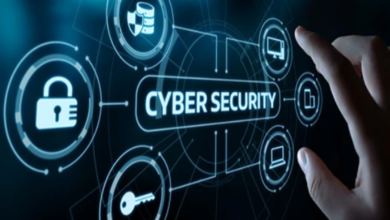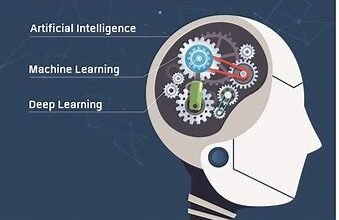Five Rules for Effective Cyber Risk Management

Five Rules for Effective Cyber Risk Management
To support incident response, several rules across industries mandate or encourage security risk assessments. But what precisely is a cybersecurity services assessment? Cyber risk assessments, for instance, are crucial in the healthcare industry because they not only help the IT team and business leaders better understand where their organisation is most vulnerable and what data is involved in higher risk treatment environments, but they are also required by HIPAA (the Health Insurance Portability and Accountability Act). What is the end goal? to more effectively manage IT-related risks, which inevitably affect both the public and commercial sectors’ customer bases, providers, applications, and entire organisations. It should come as no surprise that effective cyber risk management and assessments result from having this knowledge pervade your organisation.
The NIST RMF: Risk Management Framework
“The goal of Special Publication 800-30 is to provide guidelines for performing risk assessments of government information systems and organisations, expanding the guidance provided in NIST SP (Special Publication) 800-39,” according to the National Institute of Standards and Technology (NIST). Additionally, NIST SP 800-37 and Special Publication 800-53 add to the material. RMF is a disciplined, structured, and adaptable process for managing security and risk management that includes categorising information security systems, control selection, implementation, and assessment, system operation and common control authorizations, and continuous monitoring.
This document offers instructions on how to complete each of the three steps in the risk assessment process (i.e., prepare for the assessment, conduct the assessment, and maintain the assessment), as well as how risk assessments and other organisational risk management processes interact with one another and provide complementary information.
Recommendations for safeguarding the confidentiality of controlled unclassified information are provided in NIST Special Publications (CUI). Defense Department contractors are required to apply the security requirements of NIST SP 800-171 in order to be in compliance with the Defense Federal Acquisition Regulation (DFARS). According to the NIST SP 800-171 DOD evaluation, DOD contracts will be awarded based on the provision of strong security procedures to safeguard defence information from security incidents.
Below are a few ideas for managing cyber risk that were drawn from NIST risk assessment procedures and best practises. By streamlining your organization’s assessment process for all statutory and voluntary frameworks and increasing visibility into internal and external organisational processes as well as the NIST Risk Management Framework, CyberStrong can help you . The following are some important pointers to keep in mind as you prepare and carry out your first or subsequent cybersecurity risk assessment on your business.
Prepare For Your Risk Assessment
NIST 800-30 states that companies use the risk management strategy to properly get ready for their risk assessments. According to the special publication, the following duties are essential to carrying out a thorough risk assessment:
- the purpose of the assessment,
- the scope of the assessment,
- the assumptions and constraints related to the assessment,
Analysing the future of cybersecurity in the education & healthcare sectors
Since the COVID-19 outbreak, cybercrimes have increased by over 600 percent, demonstrating the need for cyber security. The pandemic has increased cybercrime exposure in the education and healthcare sectors, creating new opportunities for solution providers.
Understanding how prepared these industries are to fight against malware and ransomware assaults in the upcoming years, though, is crucial. Analysts believe that organizations in the education sector should practice using Multi-factor Authentication (MFA) and Single Sign-On (SSO) technologies and possibly adopt a strong cybersecurity culture.
Meanwhile, the idea of incorporating AI into hospitals is gaining popularity, and experts think that the technology might help with earlier identification of cyberthreats and minimize the number of errors made at the institutions. Having said that, technological developments and appropriate knowledge of the various threat types and available remedies could assist important industries in halting the global rise in cybercrime.
Scope Your Entire Organization
You must involve the entire organisation in your security risk analysis in order to pinpoint risks and pinpoint threats and vulnerabilities to sensitive data, whether it belongs to you or your customers. Whether you are evaluating a single location, hundreds of apps, or even suppliers, CyberStrong enables you to quickly use NIST 800-30 methodology and easily scope your whole enterprise. The NIST special publication 800-30 describes this as “Identify(ing) the scope of the risk assessment in terms of organisational applicability, time frame supported, and architectural/technology considerations”.
The foundation of CyberStrong’s risk management programme is the NIST assessment technique, the most reliable risk assessment advice to date. Federal agencies in the United States and private businesses base their risk assessment score and management on this risk-based technique.
Implement an Evolving Risk Assessment, Because Once Is Not Enough
The human element is also changing, placing emphasis on training new personnel with evolving security policies that affect existing employees. There will be an increase in medium or high risks, and previously managed risks may reemerge as new vulnerabilities. In conclusion, your risk management strategy must be continual and dynamic to defend against known risks and cyberattacks, both new and old.
Share The Information With Your Stakeholders
The process of risk assessment, according to the publication, “requires ongoing communications and information sharing between those performing assessment activities, subject matter experts, and key organisational stakeholders, including mission/business owners, risk executive [function], chief information security officers, and information system owners/program managers.”
Sharing your risk assessment findings with others promotes the accuracy and reliability of the data used to create risk assessments.
Make Your Risk Assessment Adaptive, Understood, and Actionable
The use of agility and tribal knowledge to cyber and cyber risk management has historically proven challenging. The CyberStrong Platform streamlines any regulatory or custom framework (including the NIST Cybersecurity services Framework, NIST 800-30, PCI DSS, HIPAA, NERC, ISO, and any other frameworks), and it also enables you to credibly report enterprise-level risk for each control in even the most complicated risk environments.
CyberStrong uses your risk profile to identify new mitigation options with a high return on investment for your particular firm. CyberStrong bases its risk mitigation decisions on actual data and prioritises them. Assessing your organization’s cybersecurity risk management is simple according to the tried-and-true NIST Risk Management Framework.




